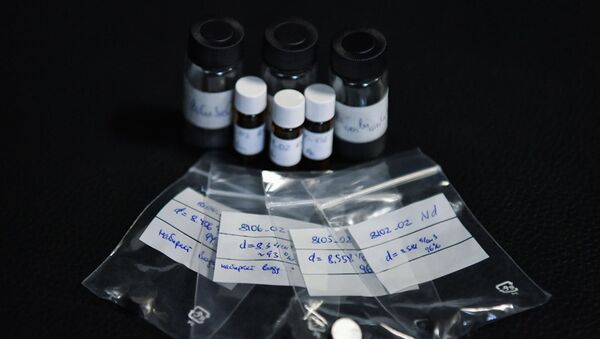This invention will allow for the rapid fabrication of similar materials without sacrificing their quality. Their findings were published in the Journal of Alloys and Compounds.
Thermoelectric materials are alloys or chemical compounds able to directly interconvert heat energy into electrical power and vice versa. Today, they are used in solid-state cooling, waste heat recovery and deep space power generation.
"We pour the reagent mixture into a graphite press mold that is placed inside the RSPS installation to be treated under pressure of 50 MPa in argon atmosphere at a temperature of up to 700ºC achieved as a result of the pulse current flowing through", said Andrei Novitsky, a co-author of the research and an employee at NUST MISiS, in an interview with Sputnik.
READ MORE: Scientists Prove Bacteria, Single-Cell Entities Can Survive on Mars
This produces bulk materials ready for further processing, namely semi-manufactured samples that can be used to make thermoelectric generator materials.
"The immediate practical impact of this research is that this synthesis method allows for obtaining medium-temperature thermoelectric materials on an industrial scale", Novitsky said. "Its application in thermoelectric material production will significantly reduce the time and energy output without sacrificing the quality and volume of the end product".
Though the scientists proved to fabricate the BiCuSeO-based material with the help of reactive spark plasma sintering to be possible, they still have a range of issues to address before scaling up production and testing it at manufacturing facilities.



